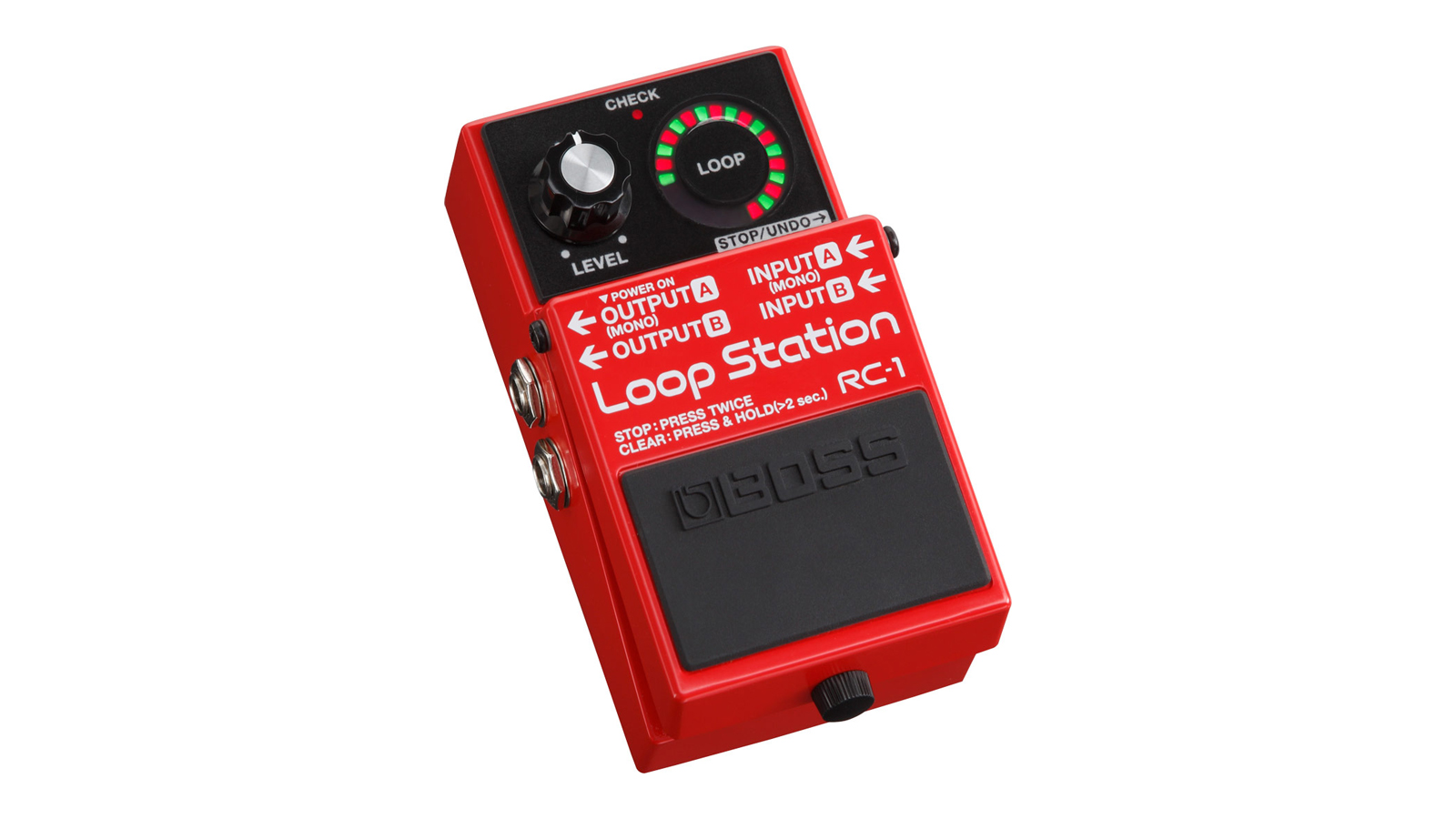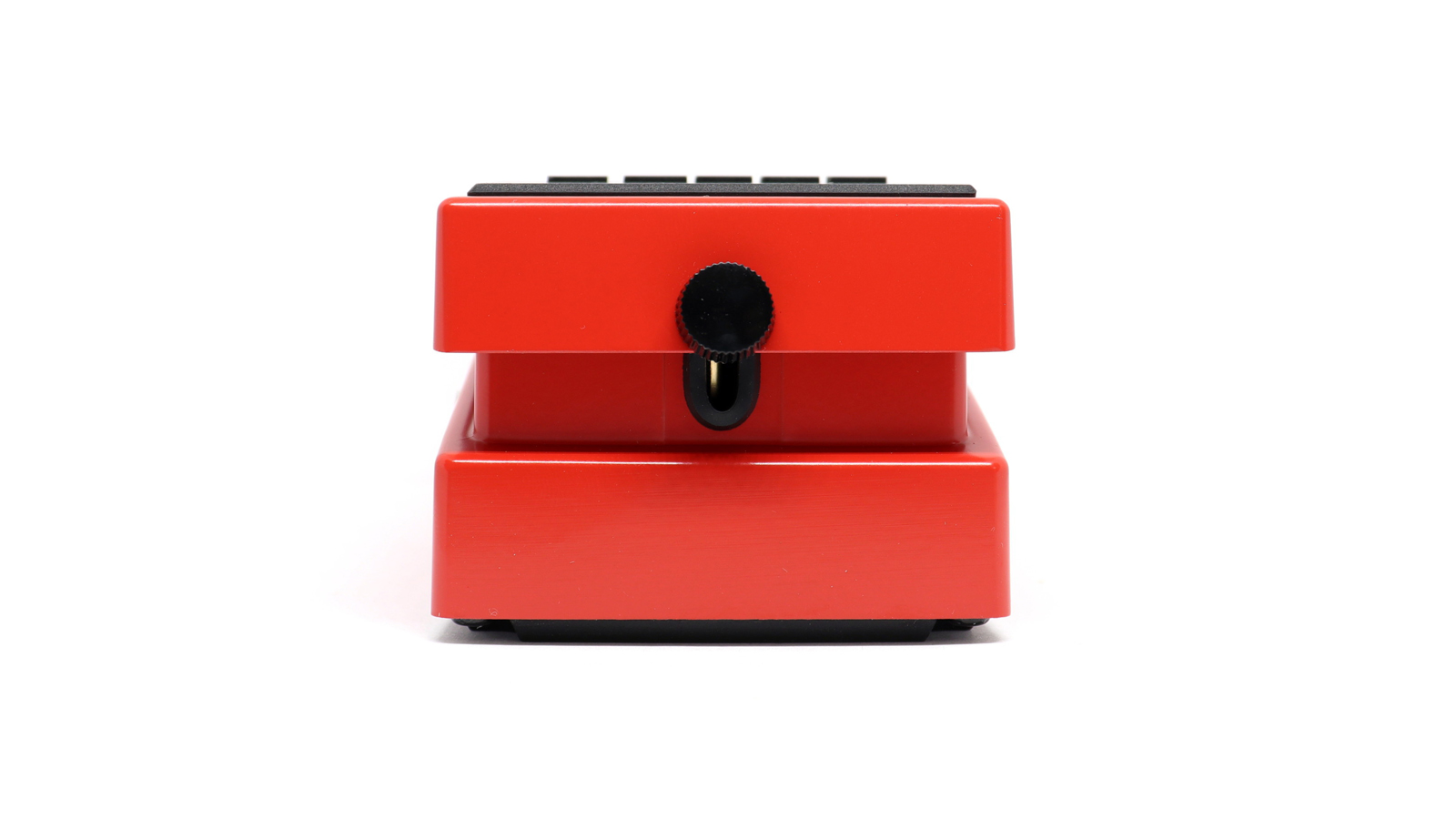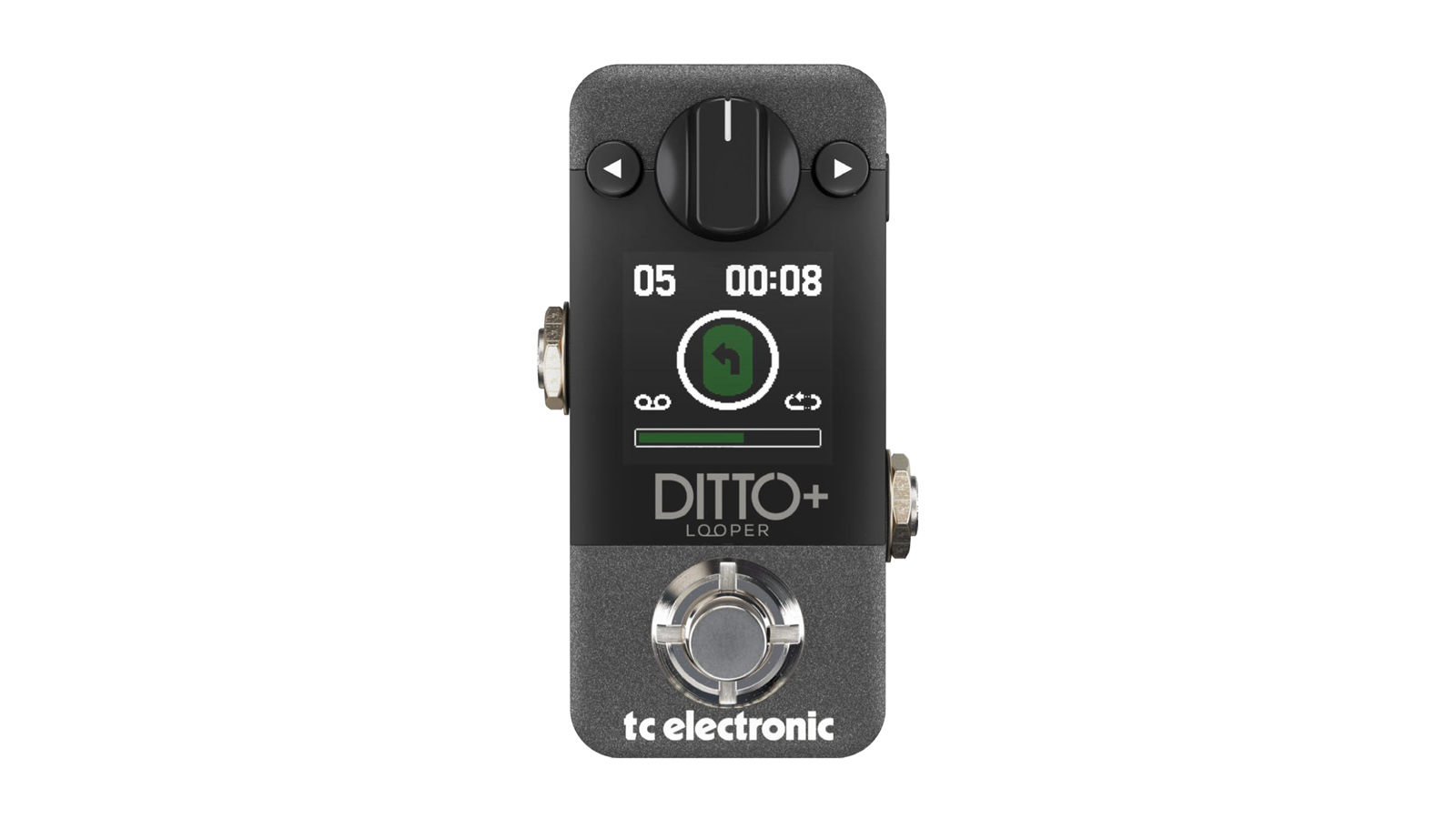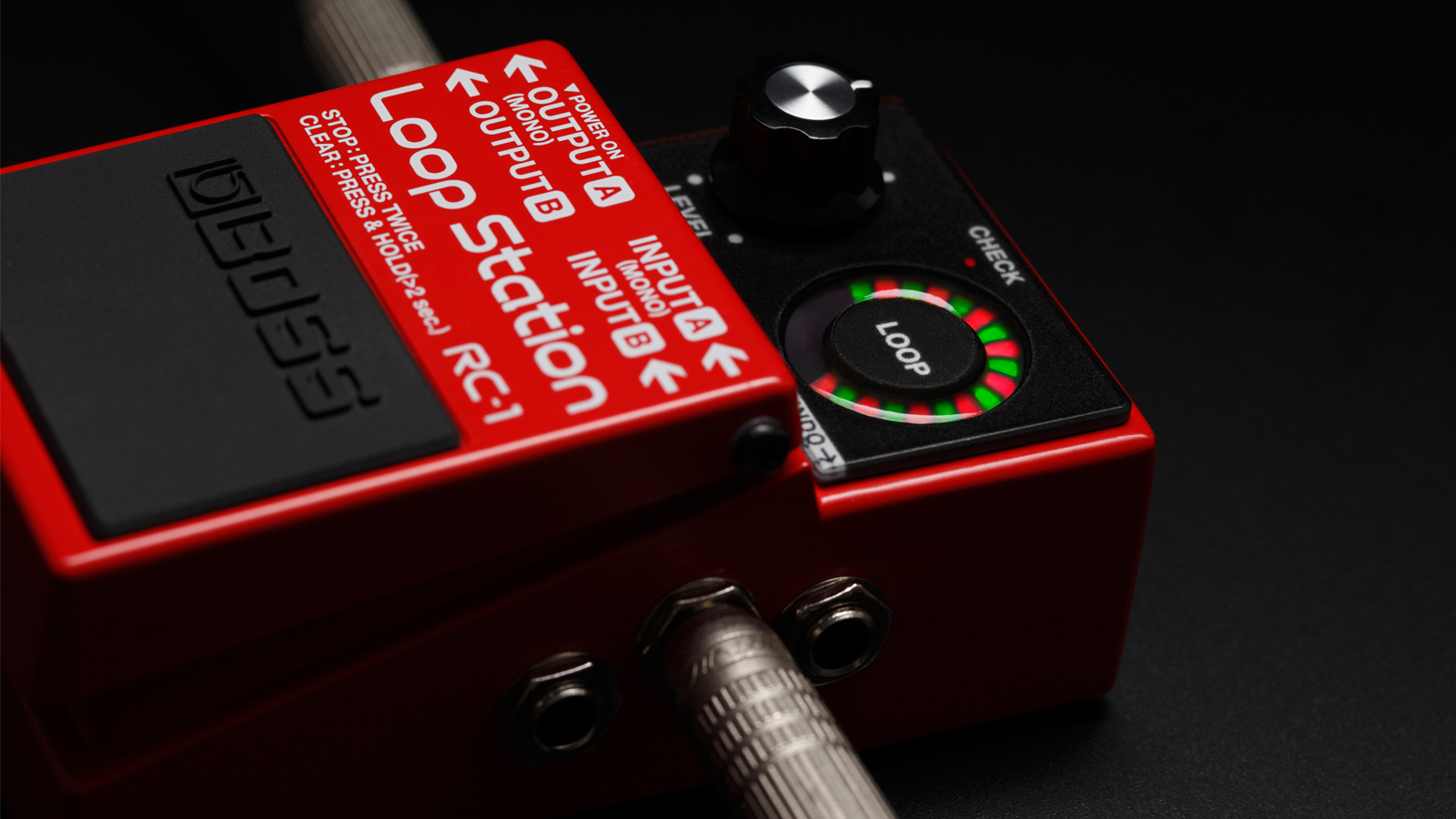MusicRadar Verdict
The Boss RC-1 is our pick of the loopers on the market for anyone new to the world of looping. This incredibly user-friendly pedal is intuitive, cost-effective, and - with it being a Boss product - it's built to last. The large display means it's impossible to lose track of where you are in your loop, and the stereo ins/outs make it a very flexible option for running multiple amplifiers.
Pros
- +
Easy to use
- +
Built to last
- +
Affordable
Cons
- -
No USB
- -
No Storage
MusicRadar's got your back
What is it?
Boss has long been the reigning king of looper pedals - and with good reason. The ever-popular Loop Station range has seen the likes of the RC-30 and RC-300 become industry-standard pedals on stages around the world. Beloved by artists such as Ed Sheeran and Kurt Vile for their robust build and high-quality components, it's no surprise that they have become a must-have pedal for many players.
The RC-1 is the entry-level point into the Loop Station series and the most basic looper on offer from the historic pedal company. Boss has stripped back this looper to its bare essentials meaning there's nothing to get in the way of your creativity. At its heart is the innovative LED display, which gives a visual indicator of where you are in your loop, as well as which of the three modes you are in - record, overdub, or playback.
With 12 minutes of recording time, you won't have to worry about capturing full songs or your extended experimental jam sessions - the only limitation is your imagination. The Boss RC-1 isn't just for the guitar players, as the stereo inputs are ideal for stereo instruments such as synthesizers or keyboards. The stereo outputs also give you the option of running two amplifiers.



Performance & verdict
If you are at all familiar with Boss pedals, then you know exactly what to expect with the RC-1. Housed in the iconic compact enclosure, this pedal feels practically bomb-proof. Boss is so confident in its near indestructibility that they even offer an impressive five-year warranty - not bad for something you energetically stomp on. Just remember to register the pedal on the Boss website.
Although it may not be as small as its contemporaries, the larger footprint allows for a more significant surface area for your foot to hit - meaning it's one less thing to worry about when you're playing.
In terms of using the pedal, it really couldn't be simpler. Press the pedal once to engage recording mode and press again to simultaneously playback and overdub. To stop the loop, simply double press. If you make a mistake - and let's face it, it's going to happen a lot at the start - then press and hold, and you'll undo the last overdub you recorded. If you need to clear the entire loop, double press and hold. This series of taps is very intuitive and doesn’t take long to get used to.
Out of the box, the RC-1 comes preset in "record mode". This means after you record your initial loop and press the pedal to playback, it will automatically start the overdub mode at the same time. Now, this can be very handy for building tracks from the ground up - laying down a muted rhythm, then a bass line, and finally a melody - but it isn't ideal if you simply want to loop some chords and solo over the top.

TC Electronic Ditto Plus: This micro looper offers a whopping 60 minutes of loop time, and the new extended loop mode is revolutionary.
Boss RC-500: If you find yourself craving a dual pedal option then look no further than the RC-500.
Fortunately, you can change this by accessing the mode menu. To do this, press and hold down the pedal switch while turning on the unit. Tap the pedal twice to switch the LED lights to the bottom half of the screen. This will initiate "stop mode". This will allow you to play back without needing to overdub straight away. We must admit, we love this feature. Depending on the situation, you may want your pedal to behave differently, and switching between modes is relatively straightforward.
Easily the best feature has to be the LED display. Not only does this do a pretty good job of showing you what mode you are in, but it's also a fantastic way of knowing exactly where you are in the loop - giving you the ability to never miss a beat.
As this is the most basic version of the loop station Boss offers, it is missing a few key features present on the more expensive models. The main one being storage. Although it will save the last thing you recorded - if you turn the pedal off - you can't save multiple loops to go back to. This can make the RC-1 a little limiting in a live situation. There is also no USB present for downloading your loops to a computer and even uploading pre-recorded loops to the pedal itself. To be honest, considering the price point, this isn't really a concern. However, if you do find yourself longing for these features, then it's worth looking at the RC-5 or RC-500.
It’s also worth mentioning that this pedal doesn’t come with a power supply. Like most loopers, it’s relatively power-hungry and therefore won’t last long with a battery, so we highly recommend investing in a quality pedalboard power supply.
Lastly, the RC-1 has both stereo inputs and outputs. This might not seem like a big deal, but it can come in very handy. This feature allows you to run two guitar amps for stereo effects, such as delay and reverb or even gives you the ability to run stereo instruments such as synths, keyboards, or drum machines.
Overall this is a fantastic pedal, and for the price, it has to be one of the top loopers on the market. Boss really has knocked it out of the park with this ultra-reliable and insanely easy-to-use unit. So whether you're looking for your first looper, or just need a simple, no-nonsense pedal, then you should definitely pick this one up.
Hands-on demos
Boss
PMT
Dawsons Music
Specifications
- Nominal Input Level: -20 dBu
- Input Impedance: 1 M ohm
- Nominal Output Level: -20 dBu
- Output Impedance: 1 k ohm
- Recommended Load Impedance: 10 k ohms or greater
- Maximum Recording Time: Approximately 12 minutes
- Controls: Pedal switch, LEVEL knob, Indicators, CHECK indicator, LOOP indicator
- Connectors: INPUT A (MONO) jack: 1/4-inch phone type, INPUT B jack: 1/4-inch phone type, OUTPUT A (MONO) jack: 1/4-inch phone type, OUTPUT B Jack: 1/4-inch phone type, STOP/UNDO jack: 1/4-inch TRS phone type, DC IN jack
- Power Supply: Alkaline battery (9 V, 6LR61), AC adaptor (sold separately) * Rechargeable Ni-MH batteries cannot be used
- Current Draw: 95 mA
- Contact: Boss

I'm a Senior Deals Writer at MusicRadar, and I'm responsible for writing and maintaining buyer's guides on the site - but that's not all I do. As part of my role, I also scour the internet for the best deals I can find on gear and get hands-on with the products for reviews. My gear reviews have been published in prominent publications, including Total Guitar and Future Music magazine, as well as Guitar World.com. I've also had the privilege of interviewing everyone from Slash to Yungblud, as well as members of Sum 41, Foo Fighters, The Offspring, Fever 333 and many more.
I have a massive passion for anything that makes a sound, particularly guitars, pianos, and recording equipment. In a previous life, I worked in music retail, giving advice on all aspects of music creation and selling everything from digital pianos to electric guitars, entire PA systems, and ukuleles. I'm also a fully qualified sound engineer who holds a first-class Bachelor's degree in Creative Sound Production from the University of Abertay and I have plenty of experience working in various venues around Scotland.
“Its mission is simple: unleash the power of any amplifier or line-level source without compromise”: Two Notes promises a “watershed” in tube amp control with the Torpedo Reload II
“I’m looking forward to breaking it in on stage”: Mustard will be headlining at Coachella tonight with a very exclusive Native Instruments Maschine MK3, and there’s custom yellow Kontrol S49 MIDI keyboard, too
“The thing from the agency said, ‘We want a piece of music that is inspiring, universal, blah-blah, da-da-da...' and at the bottom it said 'and it must be 3 & 1/4 seconds long’“: Brian Eno’s Windows 95 start-up sound added to the US Library of Congress










